The content of the article
When K. Chukovsky asked the children not to go to Africa because of the dangerous gorillas and crocodiles, he forgot to mention the Gabon viper, or maybe he simply did not have enough rhymes.
This enormous snake is frightened both by its size and appearance with large poisonous teeth, and even by its coloring, which repeats the color of fallen leaves in those tropical forests where it lives, and therefore it is completely invisible.
Appearance Description
Otherwise, this kind of viper is called cassava. It differs primarily in size: on average, its length is from 90 to 120 cm. But scientists also met individuals that were up to 2 meters long and weighing about 10-15 kg.
The massive body of cassava is shaped like a very large log. The tail is short. The snake has a very peculiar color, created by nature specifically for camouflage. It is all studded with various patterns in a combination of brown,black, brown, red and green spots, resembling various irregular triangles, diamonds, woven into intricate patterns. The segments are light gray.
An unusual phenomenon among snakes is too big a head, when compared with the proportions of the body. Because the skull stands out significantly. Some have growths on their heads, which makes cassava look ominous and intimidating. On the head, between nostrils and eyes, there are paired pits, which are designed to be able to recognize the differences in air temperature, even in fractions of a degree. Nature rewarded some snakes with such an original thermolocator to hunt warm-blooded animals in the dark.
Habitats
The Gabon Viper is home to African forests in the central part of the continent and in the east, but in other parts you can meet its individual representatives.
He lives on the ground, but mostly spends time in the forest thickets or on the outskirts of the forest. In open areas you can meet her very rarely. Although sometimes it happens that the cassava prefers to live closer to the plantations, where there may be more food than the workers are very concerned about, who are forced to spend the whole day there.
Hunting and nutrition
But the hunt for this snake begins with the arrival of twilight. It helps her forked tongue due to the fact that it is the most sensitive organ that can catch the smell of game. And on the front of the muzzle are thermolocators, which help to quickly detect the victim moving not far away. Makes her a great hunter and keen eyesight.
While in ambush, she waits for a warm-blooded animal. It can be various representatives of rodents, birds, wild cats, mongooses. The object of hunting can be dwarf antelope.
Cassava the hunter is not very skilled because of its heavy weight and size. She is not in a position to move swiftly, so she grabbed the victim while being in a long ambush. Her design, which makes the snake inconspicuous, helps a lot with this. When the animal approaches, there is a sharp forward of a powerful body, a bite - and the food is ready.
How dangerous is this snake for man?
Scientists, examining the poison of the Gabonean Viper, have established that its poison itself is not so toxic. There are snakes whose poison is more dangerous. But in cassava it has fast-acting toxins, the amount of liquid is so large that because of this it is ranked as the most poisonous snake on the planet.
Procreation
Before you achieve the location of the females, the males start real mating tournaments. They consist in the fact that both grooms are wrapped around their backs, while the upper ones are pushing each other with the help of cheeks and neck, but they do not use their deadly teeth.
After mating, the male leaves his chosen one, and she then bears cubs for more than six months.
The nest of this viper is hidden in the most secluded place so that its enemies could not find it. They belong to the ovoviviparous. The children that came into the world, and they can be from 8 to 40 or even more, are already poisonous and can eat insects and spiders. Sexual maturity is about 4–5 years old.
Video: Gabon Viper (Bitis gabonica)

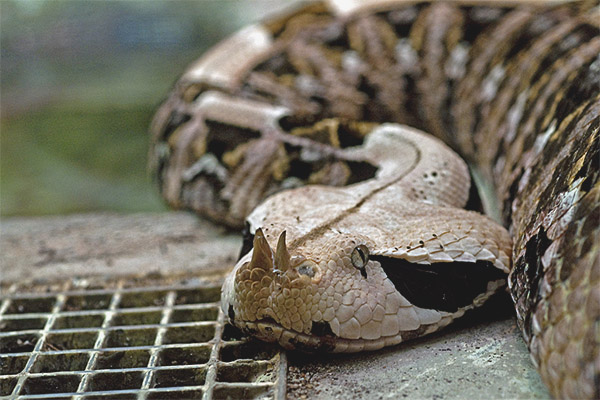
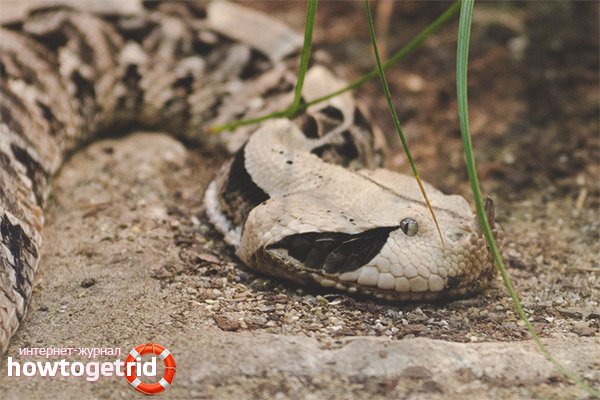

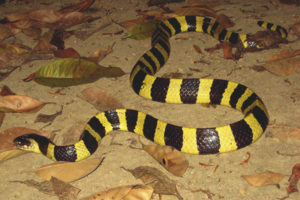

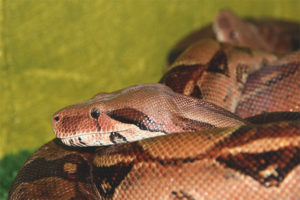
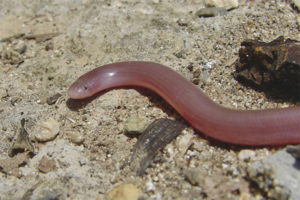
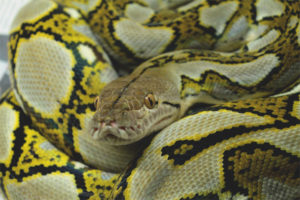
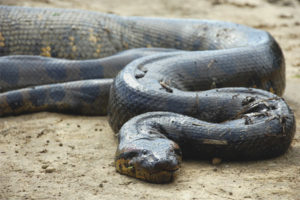
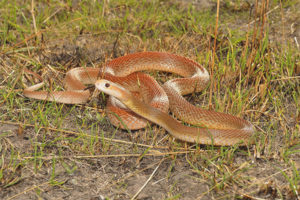
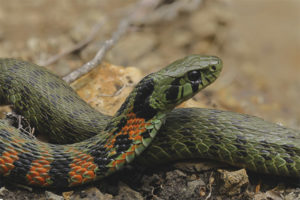
To send